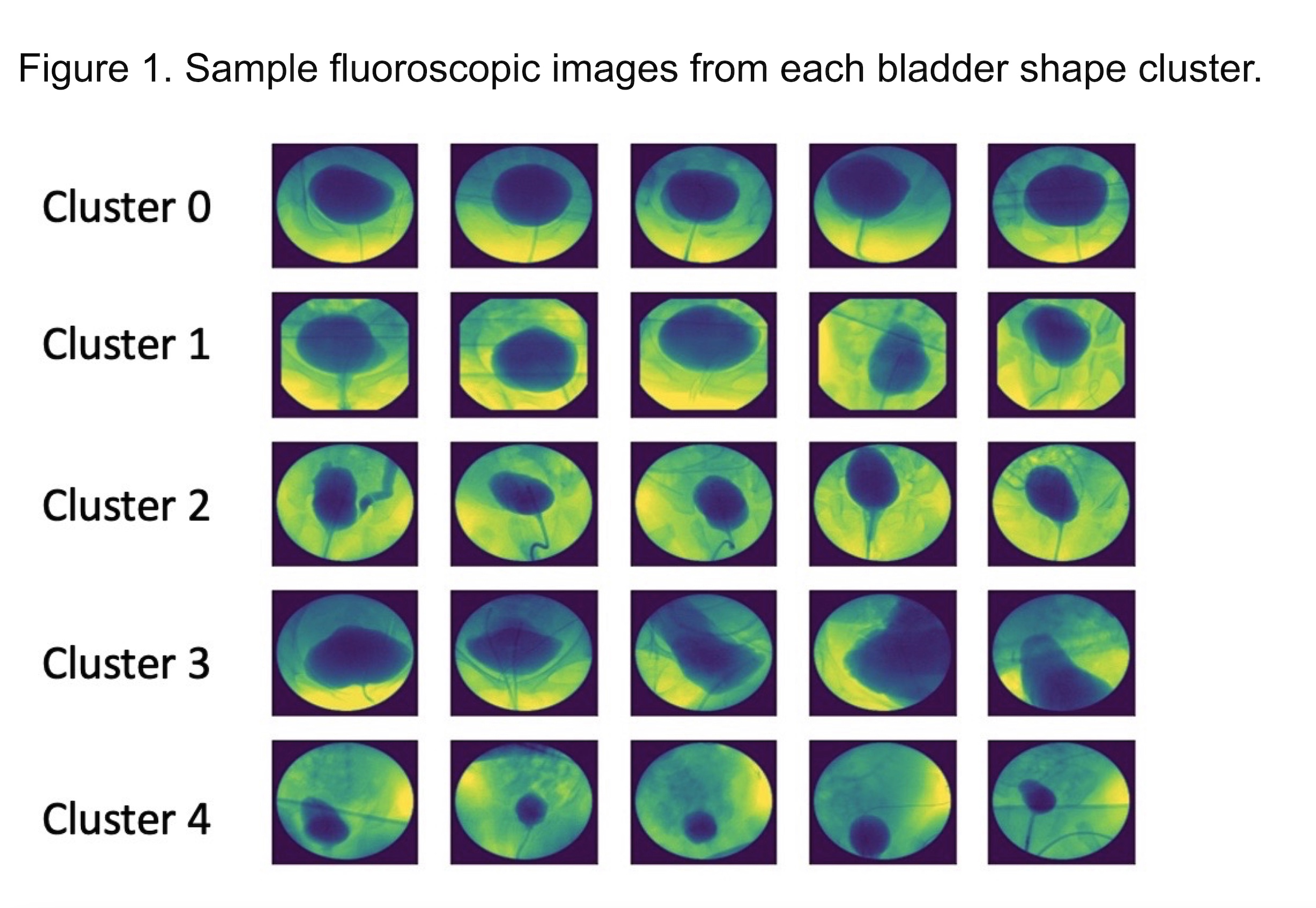Cluster Analysis of Fluoroscopic Bladder Shape in Children with Spina Bifida
Zoe S. Gan, MD1, Joey Logan, MS2, Ariana L. Smith, MD1, Christopher Long, MD3, Dana Weiss, MD3, Jason Van Batavia, MD, MSTR3, Stephen Zderic, MD3, John Weaver, MD, MSTR3, Gregory Tasian, MD, MSc, MSCE3.
1University of Pennsylvania Health System, Philadelphia, PA, USA, 2The Childrenís Hospital of Philadelphia, Philadelphia, PA, USA, 3The Children's Hospital of Philadelphia, Philadelphia, PA, USA.
BACKGROUND: Fluoroscopic images are obtained during video urodynamics (VUDS), but the value of bladder shape is not well defined. The purpose of this study was to define common bladder shapes in children with spina bifida and compare relevant clinical parameters among the clusters. We hypothesized that these parameters would differ among distinct bladder shape clusters. METHODS: We performed a cross-sectional study of 487 patients with spina bifida who were prospectively evaluated at a single institution between July 2016 and June 2022. We selected a representative fluoroscopic image obtained approximately halfway to functional bladder capacity from each patientís earliest available VUDS study. Images were passed through a pre-trained DenseNet deep learning model, and the global average pooling layer was extracted as a single array. In an unsupervised analysis, a K-means clustering algorithm was applied to the arrays to group similar images into clusters. We compared bladder pressure at 25%, 50%, and 75% of estimated bladder capacity (EBC), vesicoureteral reflux (VUR) at the time of VUDS, baseline hydronephrosis, the presence of a leak during VUDS, and %EBC at which any leak occurred. RESULTS: A total of 487 patients were included. Five bladder shape clusters were identified. Compared to other clusters, Cluster 3 had the highest bladder pressures at 25%, 50% and 75% EBC, the most VUR, and the most hydronephrosis. While Cluster 0 had similarly high bladder pressures to Cluster 3, it had less hydronephrosis and VUR, and half of the patients in Cluster 0 had a leak present during VUDS. Clusters 1, 2, and 4 had relatively low bladder pressures and low to mid-range rates of hydronephrosis and VUR, although Clusters 2 and 4 had relatively more patients with a leak present during VUDS compared to other clusters. Cluster 2 bladders were commonly oblong with funneling or open bladder necks, and Cluster 4 bladders appeared to have the smallest capacities with the lowest %EBC at which a leak occurred. CONCLUSIONS:
Bladder shape clusters identified in a pediatric spina bifida population vary in corresponding bladder pressure, hydronephrosis, VUR, urinary leakage, and %EBC at which a leak occurred. Urine leakage may dissipate bladder pressure (or be the result of increased bladder pressure) in a similar way to hydronephrosis and VUR; however, different bladder shapes are observed in these patients. Standardization of bladder shapes may facilitate further research on the utility of bladder shape in determining the severity of bladder dysfunction and predicting long-term outcomes.

Back to 2023 Abstracts
